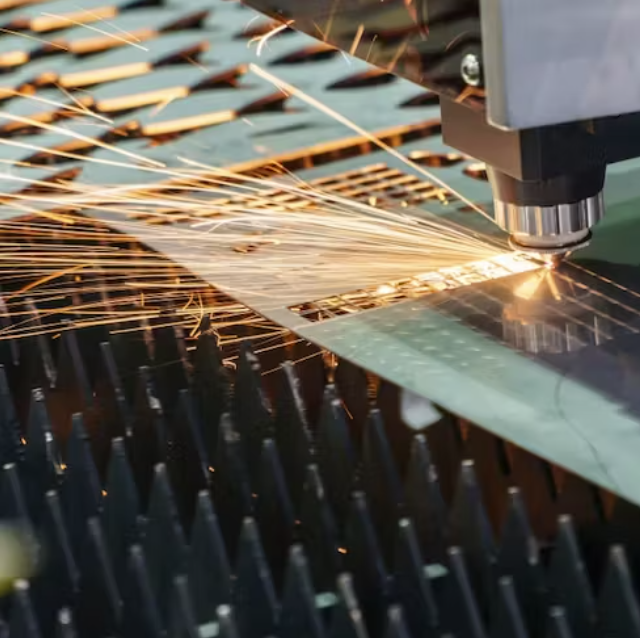-
 Call Now ! +86 13390692151
Call Now ! +86 13390692151 -
 Email Now sale@kfqizhongji.com
Email Now sale@kfqizhongji.com



Laser cutting refers to the process in which the laser light emitted by the laser is transmitted to the laser cutting head through the optical fiber line.
Laser cutting refers to the process in which the laser light emitted by the laser is transmitted to the laser cutting head through the optical fiber line. The function of the cutting head is to collimate the laser light emitted by the laser through the focusing mirror to instantly melt and vaporize the irradiated material. Laser cutting is one of the thermal cutting methods.
Following are details of laser cutting processes: Four steps are composed of laser cutting process: plate cutting, plate marking, positioning and test.
(1) Stainless steel plate cutting:
To cut stainless steel plates, first, the required shape and size are cut out according to the drawing, and then holes are made. For special parts, they are punched into the corresponding shape before being processed using laser equipment. Thin stainless steel plates can be curled up and welded, or directly processed using CNC machines through automated production and manufacturing processes.
(2) Stainless steel plate marking:
To begin, the corresponding positions of straight lines, curve graphics, and arc shapes should be drawn on the stainless steel plate based on the drawing. It is important to ensure that the lines are smooth and even.

(3) Steel positioning:
A fixture is utilized to secure and install the parts onto the stainless steel components to be cut, determining their relative positions and ensuring proper alignment. Once all parts are secured onto the machine, adjustments can be made as necessary. Different machine tools can be selected based on the specific requirements at hand. After all parts have been installed, the laser cutting production process will start.
(4) Test cut:
To begin operating the machine, first turn on the power switch. Press the start button and wait for the indicator to turn off before pressing the stop button. Once the machine is running smoothly, turn off the power switch and allow it to cool. Repeat this process until the entire work program is complete. In case of an emergency, it is possible to cut off the power supply and restart the machine.
For the metal laser cutting techniques, there are two major varieties of laser cutting: fusion cutting and flame cutting.
In fusion cutting, the use of inert gas, such as nitrogen is to expel molten material out of the kerf without contributing to energy input. Usually the cutting materials include carbon steel, stainless steel, aluminum alloy, brass and other metal materials.
On the other hand, flame cutting uses oxygen as the assist gas, which creates an exothermic reaction that increases the energy input while exerting mechanical force on the molten material.
Visit our cutting & welding page to learn more about the options available.